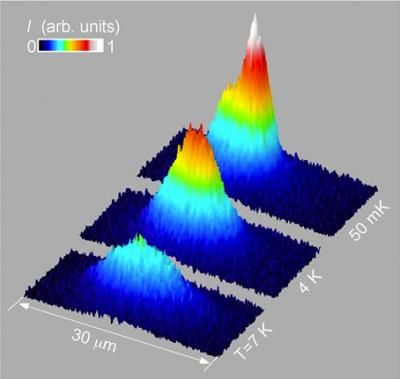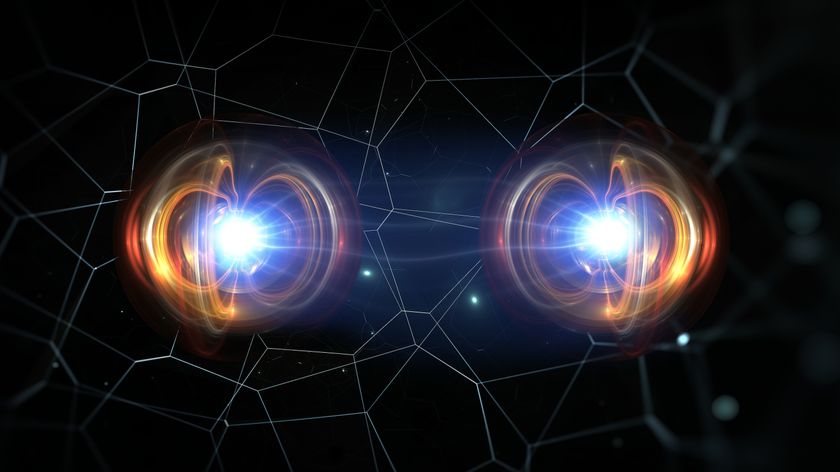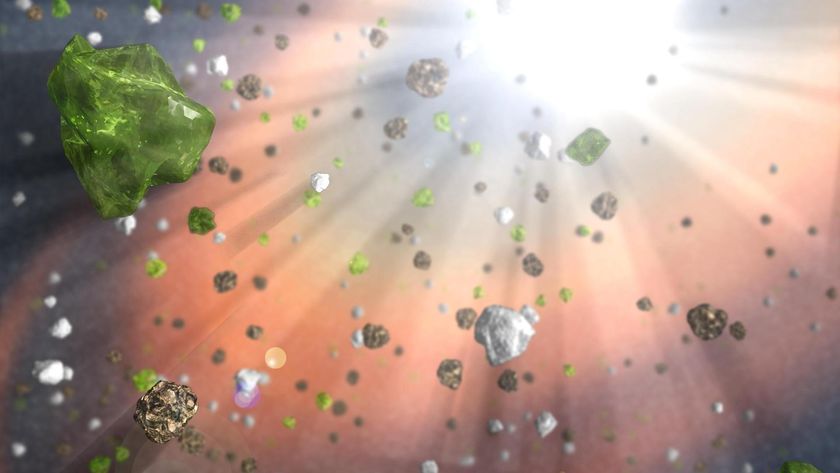
Unusual Particles Help Create Giant Matter Wave

Exotic subatomic particles called excitons have been trapped and cooled to the point they formed a giant wave of matter, physicists report.
Excitons exist in materials called semiconductors, which have a certain range of electrical conductivity that makes them essential for modern electronics. When light is shined on a semiconductor, it can kick out an electron from an atom, creating a bound state between the "hole" that's left and the detached electron, called an exciton.
Now, researchers have cooled down excitons to the point that they form a single entity, a condensed state called an exciton condensate. And for the first time, the scientists have created this state within a trap in a lab.
"Condensation in a trap is important because it provides an opportunity to control a condensate," research team leader Leonid Butov of the University of California, San Diego, told LiveScience. "This is a powerful opportunity to study the properties of this state of matter."
Excitons exist in nature — they are integral to photosynthesis, for example — but the particular type being manipulated here is rare, and could potentially be useful for applications such as solar energy and super-fast computing. [Graphic: Nature's Tiniest Particles Explained]
"It's interesting physics," Butov said. "It's fundamental properties of light and matter."
According to the theory of quantum mechanics, all particles are also waves. Individual particles each have their own wavelengths and phases, and they are not usually synchronized. However, if particles are cooled down below a critical temperature, their waves start to match so they are all in the same phase and have the same wavelength; this is called a condensate.
Sign up for the Live Science daily newsletter now
Get the world’s most fascinating discoveries delivered straight to your inbox.
"You add many little waves and they form a giant matter wave," Butov described.
When particles are in condensate form, they often have special properties, such as superfluidity — the ability to flow as a liquid without friction. There are some indications that the exciton condensate the researchers created also has this property, but further study is needed to confirm this.
To create the exciton condensate, Butov and his colleagues had to chill the excitons after they were formed, but before they had a chance to recombine to become normal atoms. To do this, the researchers used layers of alloys made of gallium, arsenic and aluminum inside the semiconductor to separate the dislodged electrons from their holes.
They then chilled the semiconductor to a temperature of about 50 milli-Kelvin, just a fraction of a degree above absolute zero.
The research was detailed in a paper published recently in the journal Nano Letters.
You can follow LiveScience senior writer Clara Moskowitz on Twitter @ClaraMoskowitz. For more science news, follow LiveScience on twitter @livescience.












